|
BULB LOG 45 --- 7th November 2007
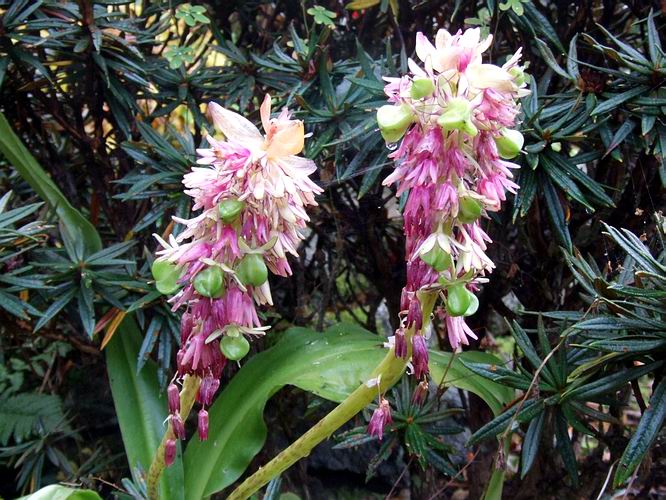
Eucomis bicolor
It is a long way from its home on Mont-aux-Sources of the Natal in South Africa to our garden in North Eastern Scotland but Eucomis bicolor is perfectly hardy. We have grown it outside for over 20 years and I suspect that the only reason it has not increased more is that I have it planted in a fairly dry spot. I chose a dry well drained site as I was worried that, like so many plants, it would be able to take the cold but not if it was also very wet. It is a phenomenon that I have often cogitated and have never come up with a definitive conclusion. Is it that fact that when it is cold and the bulb is completely dormant the excess water causes it to rot or is it the fact that the water in wet soil conducts the cold much quicker and deeper into the soils thus freezing the bulb and destroying the tissues - or is it a combination of both? Whatever it is I should compensate for the well drained site by providing the plant with plenty of water when it is in growth. In this picture you can see it is still decorati
ve as the seed capsules swell and the floral segments turn purple.
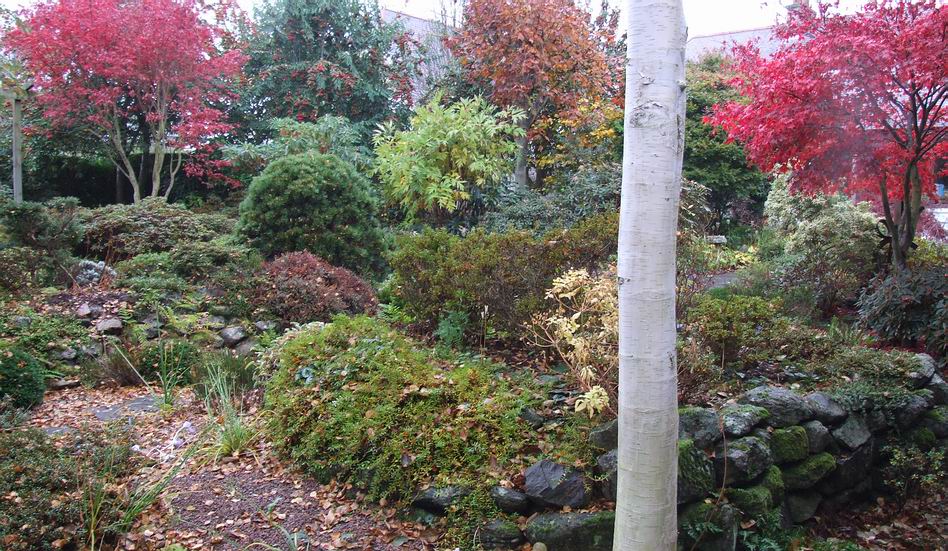
Autumn garden
I just love the autumn especially when we get a good spell of weather, like we have just had, and the colours stay for a while: rain and strong winds are now forecast and that will bring an abrupt end to this beautiful display of colour in the garden.
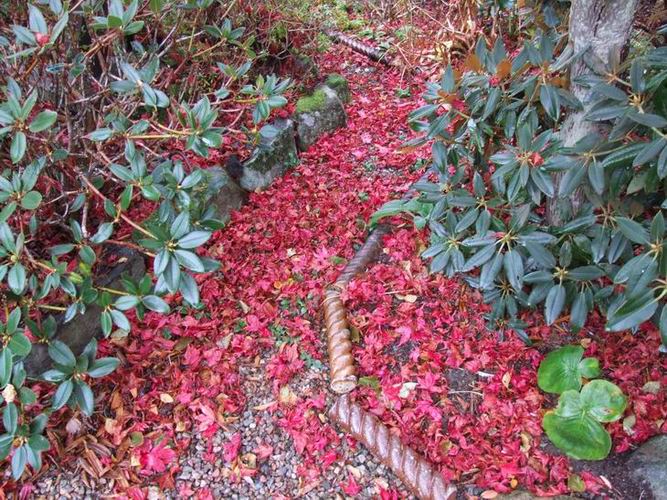
Fallen leaves
Even as they fall the leaves create another brilliant effect giving us a red carpet to walk on as we make our way around the paths. Notice the green Arisaema leaves in the bottom right of the picture below the rhododendron?
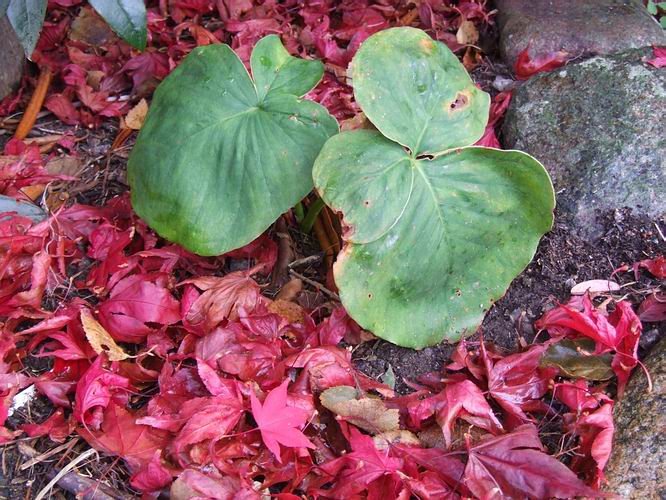
Arisaema leaves with Acer leaves
The bright green of the arisaema leaves contrast beautifully with those of the acer. I thought I had lost this arisaema which was planted many years ago and succumbed to the fate of so many plants in a maturing garden - being over grown by shrubs or more vigorous plants. A few years ago we cut this rhododendron back as it had grown right out and started to block off the path and this arisaema has reappeared since then. It had obviously shrunk down to a tiny bulb hanging onto life just hoping that the conditions would improve. When we cut back the rhodo moisture could again penetrate the soil and each year the arisaema has had bigger leaves - next year it may even flower and I can see what one it is. This again is a lesson of plants not getting sufficient water in their growing period - in this case summer.
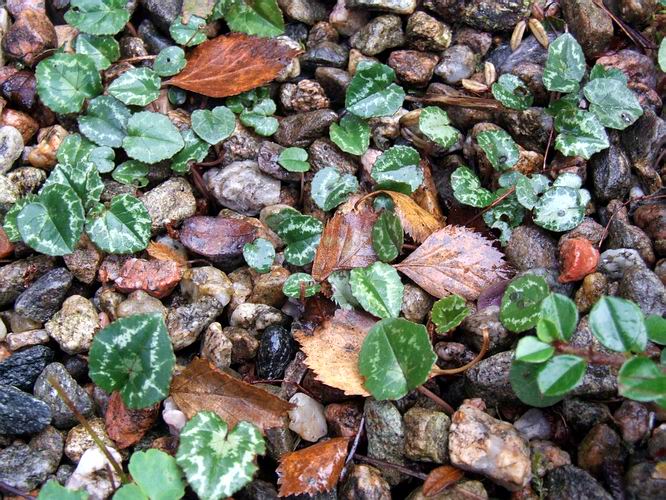
Cyclamen seedlings
My project to establish lots of cyclamen in the garden is progressing and here is one of many groups of seedlings sown directly into gravel areas. Some of these germinated last year others are just appearing for the first time and my intention is that I sow enough seeds I am bound to get some that will be able to adapt to growing in our acid soils and local climate. I have sown thousands of seeds of all species and I am excited by the results and hopeful that I will succeed and the garden can be full of cyclamen.
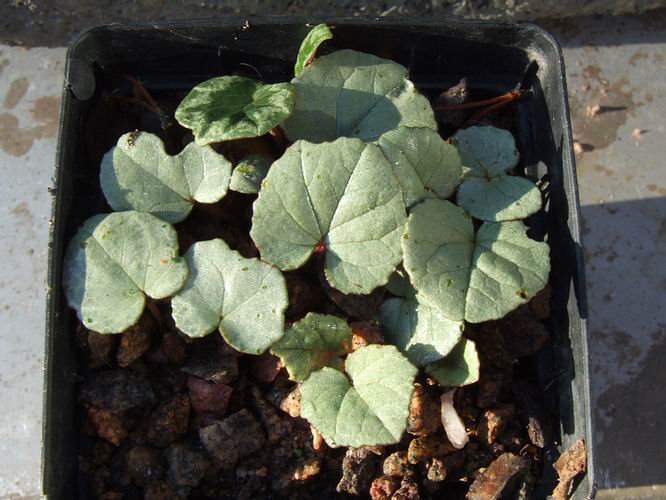
Cyclamen hederifolium silver leaf seedlings
I have sown a few into pots like this silver leaved form of Cyclamen hederifolium, I will then plant them out in the garden. You might think that it is easier to sow directly into the garden and save the time and frame space but, when I only have a few seeds of a special form, sowing in pots is worth it.
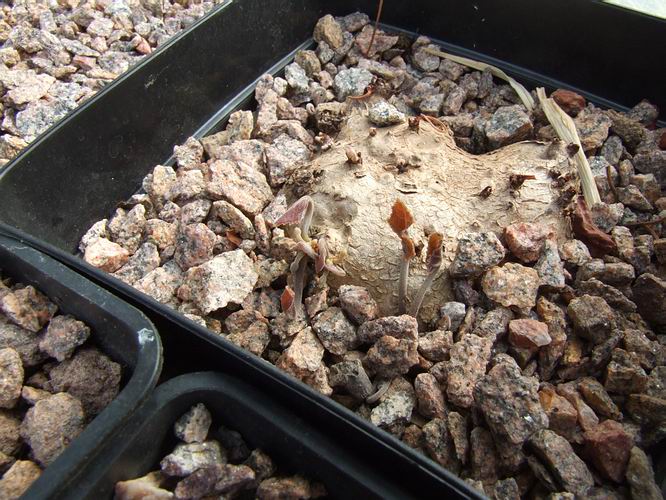
Cyclamen graecum flower buds
I do grow a number of Cyclamen in pots and I still attempt to grow Cyclamen graecum well and get it to flower. I do not know how many I have tried and eventually given them away to friends in the warmer south. I am always tempted to try it again and I was encouraged to see these embryo flower buds forming on this old tuber.
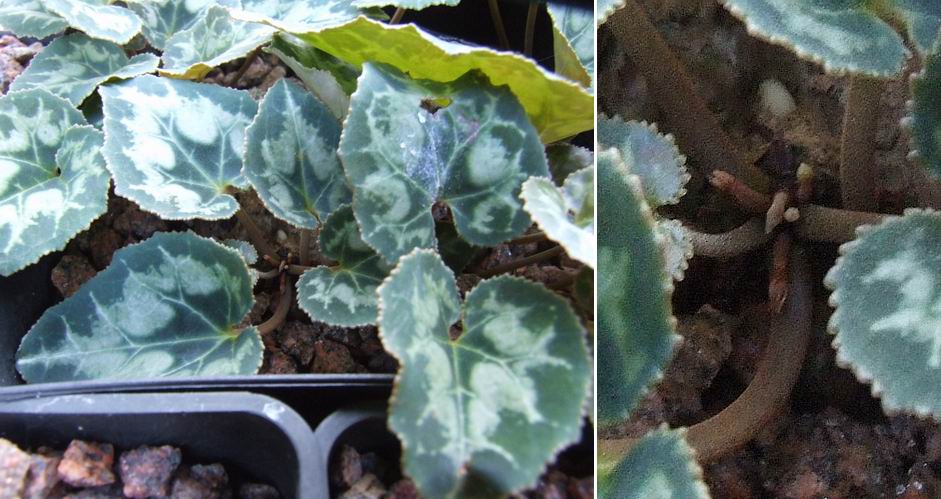
Cyclamen graecum aborted flower buds
However as the leaves developed the flower buds did not and they have aborted and started to shrivel. I expect that I will just have to accept that unless I am prepared to heat a glasshouse, and I am not, then I will just have to enjoy other people's beautiful flowering Cyclamen graecum plants.
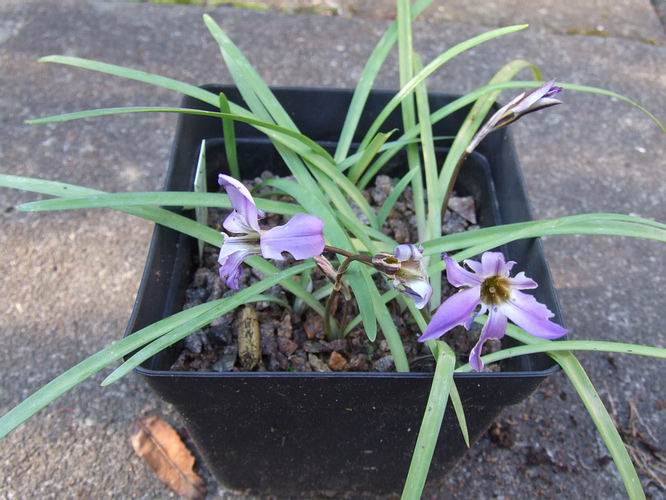
Ipheion
Another mistake that I reported in an earlier log was leaving some Ipheion bulbs in the fridge from July 2006 for over a year. I discovered them in late July 2007 and planted them to see what would happen. At that time I was re-potting other Ipheions which were in their summer dormancy so it was interesting to see how the stored ones would behave. The answer is that they started into growth and as you can see from the picture they are now in flower, if rather chewed by slugs.
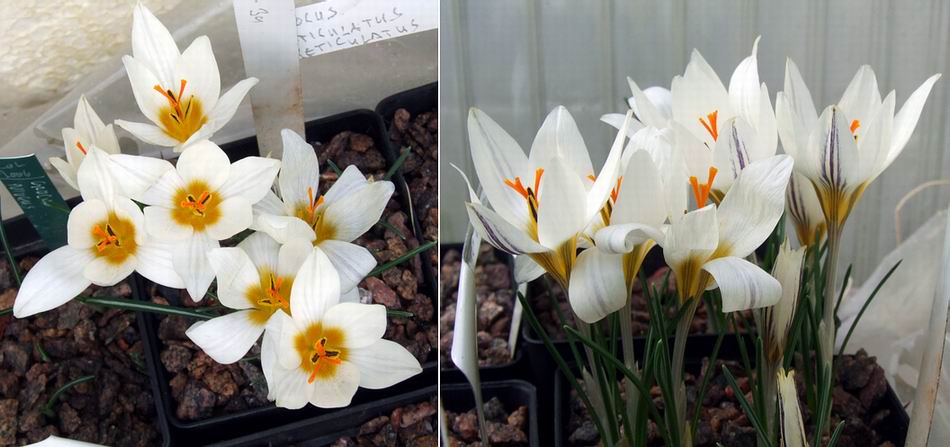
Crocus biflorus melantherus
It is still the crocus flowers that are the main feature in the bulb houses here is another picture of Crocus biflorus melantherus, a plant I showed last week.
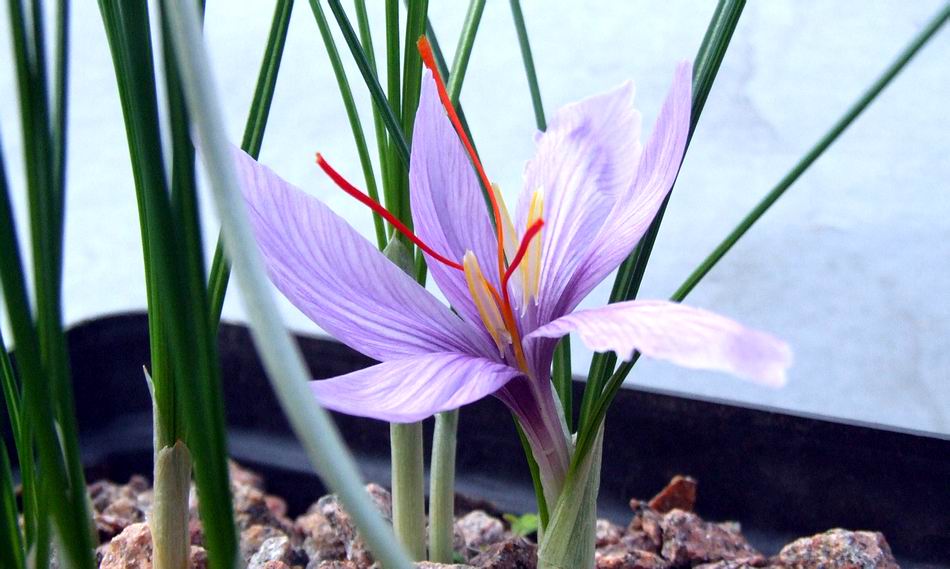
Crocus sativus
I have managed just one flower on Crocus sativus, the saffron crocus, it is another bulb that is reluctant to flower in the colder north. It is reported to enjoy being grown like a vegetable crop that is planted deeply into a very rich organic compost in a well drained sunny site where it can flower freely and increase well.
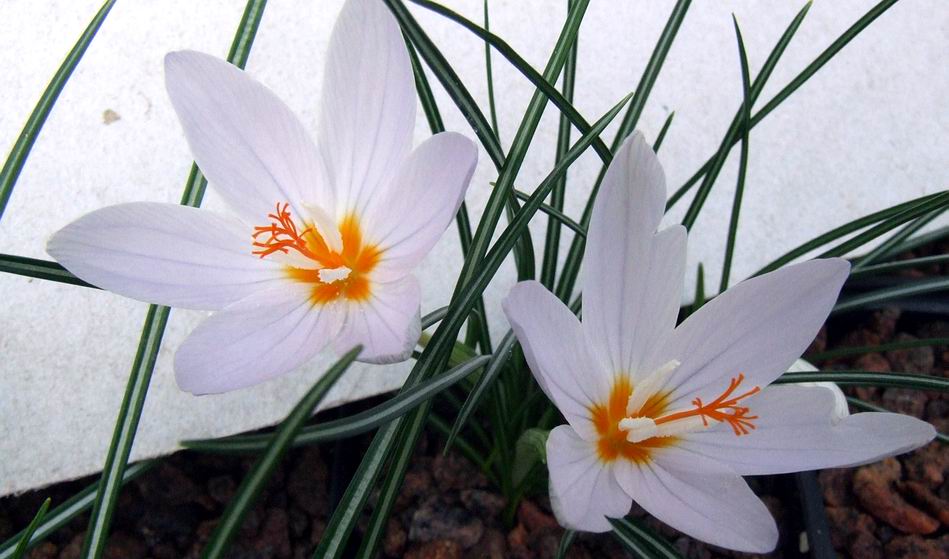
Crocus tournefortii
The first flowers of the beautiful Crocus tournefortii are just opening now, it is among the last of the autumn flowering crocus to open for us - it is native in most of the Aegean Islands.
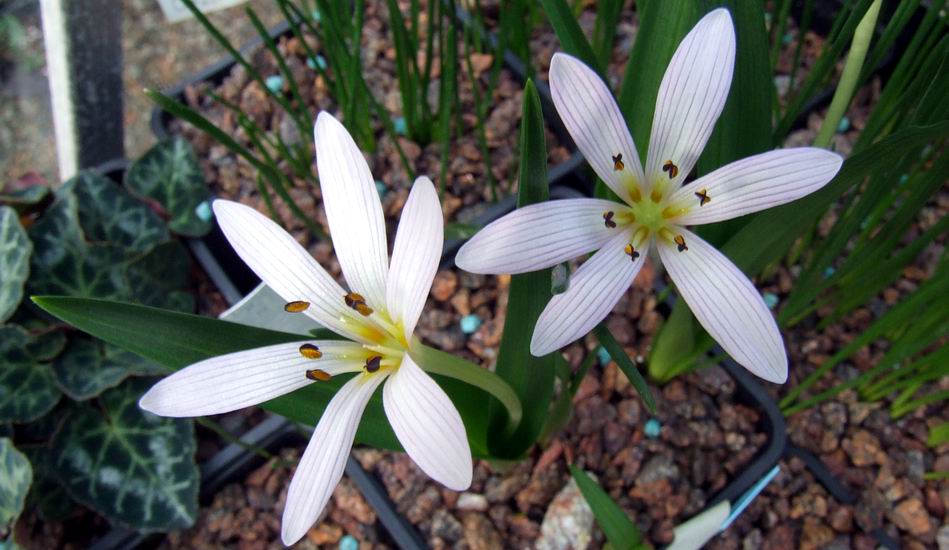
Colchicum cupanii
Colchicum cupanii is one of a group of very similar taxa that causes much confusion - is it one very variable species or a group of species that are so similar that it is almost impossible to tell them apart? I think that question will keep the taxonomists busy for many years to come as they name, rename and then name them again. What ever they are to be called they are a very welcome addition to the small autumn bulbs - I got this form from Tony Goode.
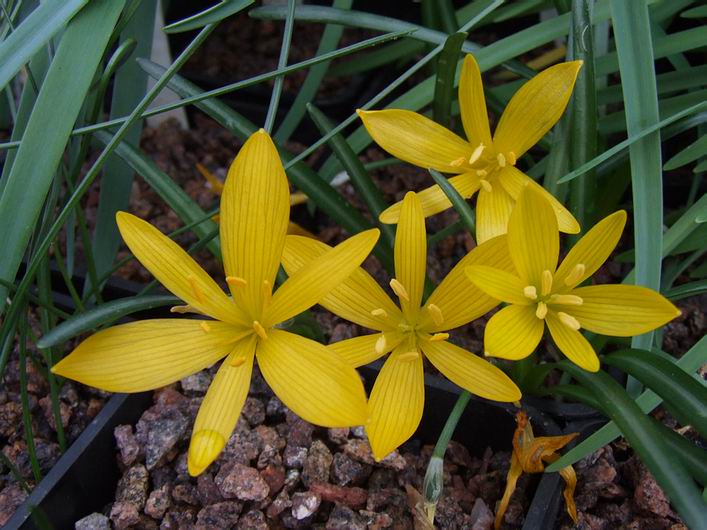
Sternbergia sicula hort
And talking of confusing nomenclature I will finish this week with a picture of a beautiful Sternbergia: is it sicula, or a form of lutea? I think I will start to call them Sternbergia sicula hort as I am sure that they are not true sicula but I am not convinced that they are S. lutea either - maybe a hybrid?
www.rcpe.ac.uk/library/exhibitions/crowe/timeline.php
^ back to the top ^
|

